We investigated the mechanism of postoperative gastric stasis following pylorus preserving pancreatoduodenectomy (PpPD) with two experimental models. First, the duodenum transection and re-anastomosis was performed at 1 cm (group I), 2cm (group II) and 4 cm (group III) distal to the pylorus to interrupt the intramural neural pathways in rats, and then gastric emptying was measured with the phenol red method at 2 or 4 weeks after surgery and neuronal nitric oxide synthase (nNOS) containing neurons in the duodenal myenteric plexus were examined immunohistochemically. Second, the pancreatoduodenectomized dogs were divided into two groups of the pylorus preserving (PP) and the pylorus partial resection (PPR) by means of the duodenojejunal reconstruction, and then gasric emptying was measured with the acetaminophen method at 2 and 4 weeks after surgery.
In duodenum transected rats, there were no significant differences between gastric emptying of group III transected distal to the papilla of Vater and normal controls, whereas both of group I and group II transected oral to it showed significantly delayed gastric emptying (
p<0.05) and the increase of nNOS containing neurons in the distal and the decrease of those in the oral to the anastomosis. In the PpPD dogs, the pylorus preserving group showed significantly delayed gastric emptying compared with the partial resection group or preoperative controls. These results suggest that the decrease in nNOS containing neurons due to the transection oral to the papilla of Vater causes delayed gastric emptying and may be related to postoperative gastric stagnation following pylorus preserving pan-creatoduodenectomy.
View full abstract
